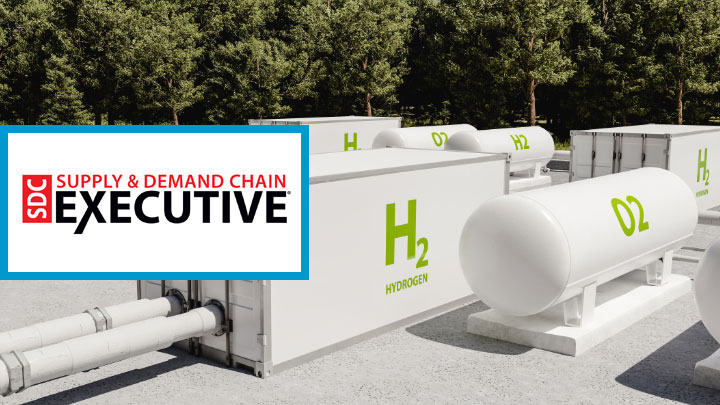Liquid Hydrogen Keeps on Truckin’
Read Time: 3 minutes
This is a repost from Supply & Demand Chain Executive.
It is becoming clearer that the winners in the clean transportation race will be the industry leaders focusing on liquid hydrogen (LH2). This will allow fuel station operators to control their own supply chain.
In May, Volvo Trucks conducted a test of its hydrogen-powered electric trucks on public roads, reiterating that “hydrogen-powered fuel cell trucks will be an important part of Volvo Trucks’ zero exhaust emission product portfolio.” Toyota had already announced earlier this year that it can now turn diesel semis into hydrogen-powered big rigs, declaring that zero-emissions hydrogen technology is an alternative to plug-in electrics. And Hyundai also launched its U.S. hydrogen fuel cell truck strategy, naming hydrogen-powered fuel cell trucks as the company’s zero-emission replacement for diesel big rigs.
Interest in clean transportation is growing exponentially, and truck manufacturers are setting their sights on hydrogen.
So, who exactly are the stakeholders in the clean transportation arena? Fleet operators, vehicle manufacturers and those on the front lines developing the infrastructure that will support a clean energy future. It is becoming clearer that the winners in the clean transportation race will be the industry leaders focusing on liquid hydrogen (LH2).
Why LH2? Hydrogen is naturally found in its gaseous state but is being recognized as more beneficial in its liquid state. To convert gaseous hydrogen to its liquid form, companies use a process called liquefaction, which creates a denser form of hydrogen, increasing the efficiency of its usage as fuel. This increased energy density enables more molecular hydrogen to fit within a given space, allowing for more energy to be stored and transported wherever needed. Enhanced purification is also a natural byproduct of the liquefaction process.
Let’s look back to last year and the excitement generated around hydrogen hubs. On June 6, 2022, the U.S. Department of Energy (DOE) released a Notice of Intent (NOI) to fund the Bipartisan Infrastructure Law’s $8 billion program to develop regional clean hydrogen hubs (H2Hubs) across America. H2Hubs “will create networks of hydrogen producers, consumers, and local connective infrastructure to accelerate the use of hydrogen as a clean energy carrier.” The production, processing, delivery, storage, and end-use of clean hydrogen, including innovative or pioneering uses in the industrial sector, are critical to the DOE’s strategy to reduce carbon emissions.
First, it’s important to define what a “hydrogen hub” is, as well as what it is not. A hydrogen hub is a network of infrastructure located in close proximity that integrates a number of hydrogen-based energy services that connect hydrogen producers and consumers. These services are intended to match the supply and demand for hydrogen energy and will initially be focused on locations of suitable demand. The clustered design of a centralized hub allows for the sharing of technology and infrastructure, creating economies of scale and lower unit costs of energy for each service that shares the infrastructure.
But the hydrogen hub is only one step in the evolution of successful deployment of an LH2 infrastructure. On-site liquid hydrogen solutions will be an essential part of a complete and robust infrastructure that heavy-duty mobility customers can rely on to meet their needs. These distributed systems provide flexibility and can also help control costs while mitigating risk related to transportation of the molecule. Creating distributed modular hydrogen systems provides significant benefits to both the hydrogen and renewable energy industries. The main advantage exists in portability and ease of integration, as these systems will be accessible on-demand and in relatively remote areas that would otherwise be non-viable for larger systems. The ease of spread and integration will lead to quicker adoption of hydrogen systems, which allows for a faster and easier global transition to green energy.
The key to making LH2 a viable, economically feasible energy alternative is to develop distributed systems, so that LH2 can be available anywhere whenever and wherever it’s needed. This will allow fuel station operators to control their own supply chain.
While there are great advances in clean transportation, it is now becoming clear that LH2 will lead the way.

